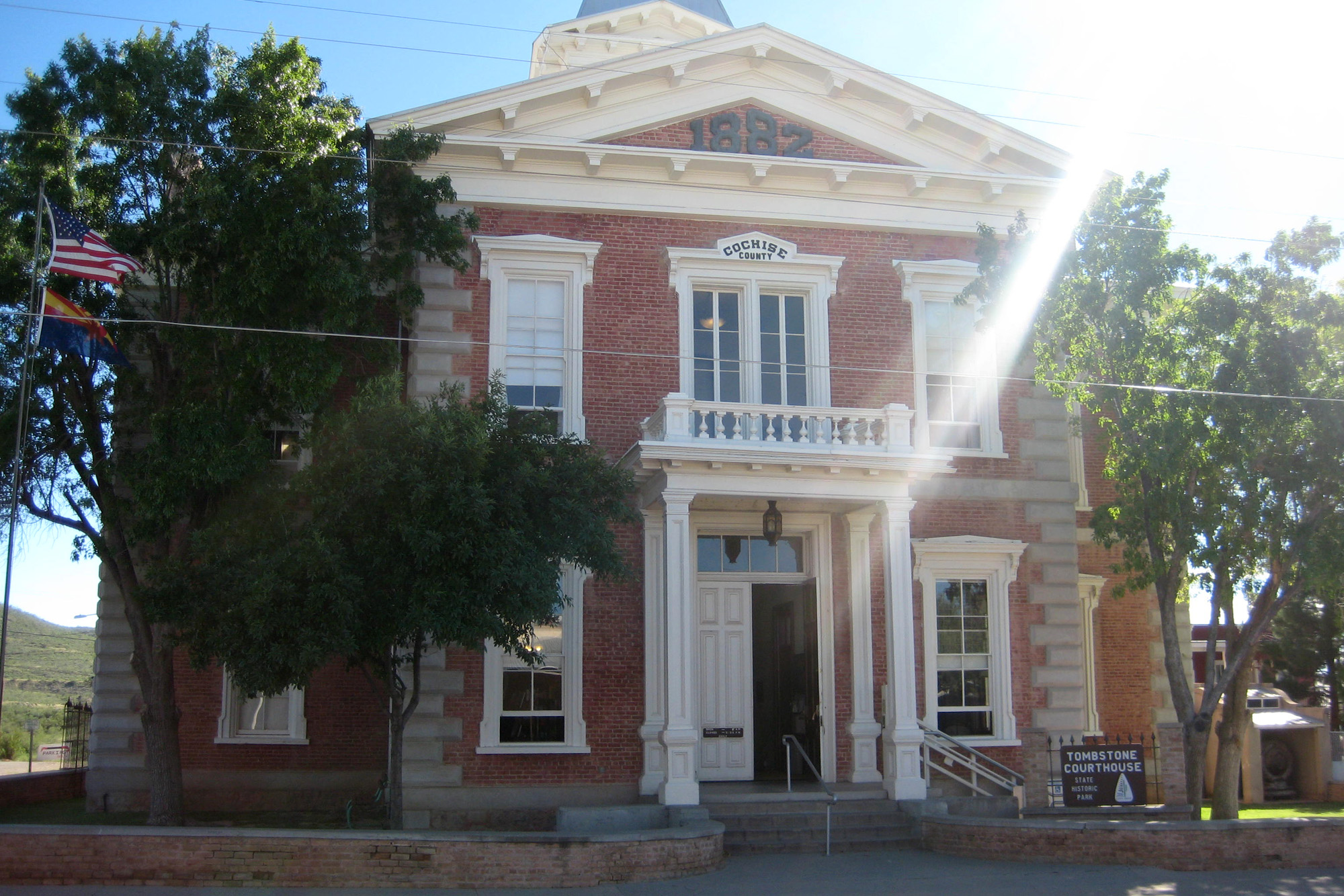[Source: Maria Polletta, Cronkite News Service. via Tucson Sentinel]

It’s around 90 degrees outside and Mary Evans is buttoned up in a long-sleeved, high-collared white blouse that’s fastened at the neck with a black cameo. A black wool skirt, worn over bloomers, skims the top of her black boots.
It looks uncomfortable, but Evans doesn’t seem to mind.
After six years of volunteer work at the Tombstone Courthouse State Historic Park, Evans says she still gets caught up every time she browses the cases of wedding dresses, children’s shoes, dolls and toys.
“Everything in the courthouse is special,” Evans said.
Evans couldn’t imagine losing the iconic building when budget cuts threatened funding for 19 of the state’s 28 parks, including the courthouse, earlier this year.
Neither could leaders of this former silver-mining town, which draws tourists from all over the world with attractions like the OK Corral and Boothill Graveyard.
Under an arrangement with Arizona State Parks, the city of Tombstone took over the courthouse April 1. A professional service agreement allows the Tombstone Chamber of Commerce to oversee park operations for at least three years, with two more two-year terms possible.
Since the courthouse changed hands, park hours have been extended from five to seven days a week, and volunteers have traded in state parks uniforms for period wear, said Patricia Moreno, the park’s manager. Staff and volunteers have also been working to create “living history,” such as trial re-enactments in the courthouse’s upstairs courtroom.
The number of visitors was 20 percent higher in April, May and June this year than in the same period last year, Moreno said.
Jay Ream, assistant director of Arizona State Parks, said things seem to be going well at the other four state parks now entirely operated by cities or other entities as well as the eight parks that receive funding from partners but are still operated by state parks staff.
“We’re glad they stepped up,” Ream said. “There have been minimal problems with these transitions. It’s gone very smoothly, and it’s been done very well.”
The state parks operations budget was reduced from about $28 million two years ago to about $18 million as lawmakers addressed the budget deficit.
“If not for our partners, many of our parks would have been closed,” Ream said.
Tombstone Mayor Dustin Escapule said he didn’t hesitate to step in when he got word of the decision to close down the courthouse.
“Really in one meeting (with state and local officials), we decided, ‘OK, this is how it can work, and this is what will happen,'” Escapule said.
He said feedback since the transition has been “positive, positive, positive,” not only from the citizens of Tombstone but from the state.
“Tombstone has really stepped up and claimed ownership of the courthouse,” said Patrick Greene, executive director of the Tombstone Chamber of Commerce.
Greene said the park is currently making a profit, which is used to improve the park.
“Based on our success, I would think that state parks would most likely allow us to continue, but it depends on the elected people in office and the philosophy at the state level,” Greene said.
Ream said that even if the state does assume control of the parks again, it may not be under the old model.
“Will we be able to manage (the parks) the same way? Possibly not,” he said. “We might be doing it through private partnerships or even sponsorships.
“But the goal of the Arizona State Parks Board is to keep the parks open to the public, whatever that takes.”








You must be logged in to post a comment.